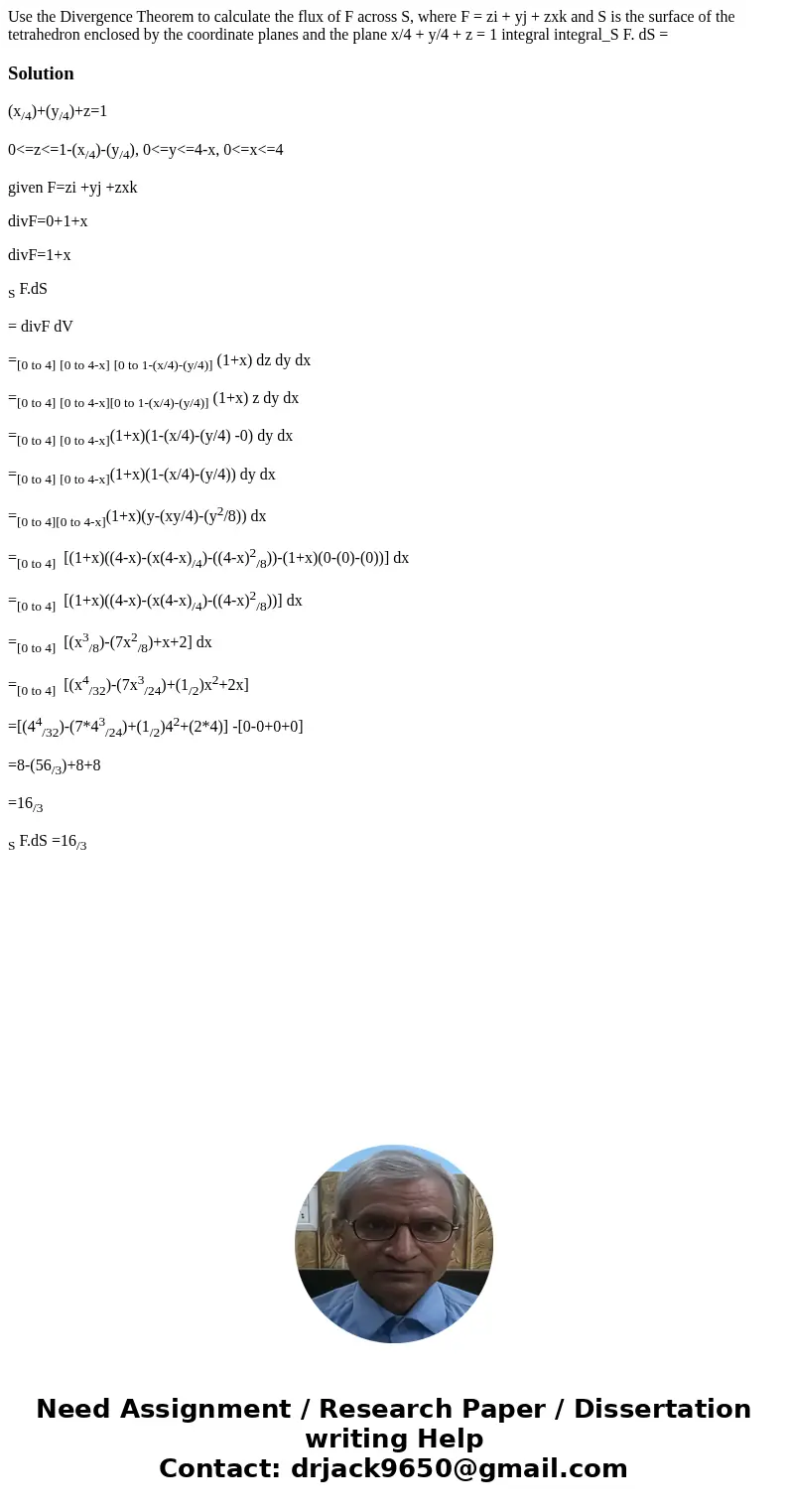Use the Divergence Theorem to calculate the flux of F across
Use the Divergence Theorem to calculate the flux of F across S, where F = zi + yj + zxk and S is the surface of the tetrahedron enclosed by the coordinate planes and the plane x/4 + y/4 + z = 1 integral integral_S F. dS =
Solution
(x/4)+(y/4)+z=1
0<=z<=1-(x/4)-(y/4), 0<=y<=4-x, 0<=x<=4
given F=zi +yj +zxk
divF=0+1+x
divF=1+x
S F.dS
= divF dV
=[0 to 4] [0 to 4-x] [0 to 1-(x/4)-(y/4)] (1+x) dz dy dx
=[0 to 4] [0 to 4-x][0 to 1-(x/4)-(y/4)] (1+x) z dy dx
=[0 to 4] [0 to 4-x](1+x)(1-(x/4)-(y/4) -0) dy dx
=[0 to 4] [0 to 4-x](1+x)(1-(x/4)-(y/4)) dy dx
=[0 to 4][0 to 4-x](1+x)(y-(xy/4)-(y2/8)) dx
=[0 to 4] [(1+x)((4-x)-(x(4-x)/4)-((4-x)2/8))-(1+x)(0-(0)-(0))] dx
=[0 to 4] [(1+x)((4-x)-(x(4-x)/4)-((4-x)2/8))] dx
=[0 to 4] [(x3/8)-(7x2/8)+x+2] dx
=[0 to 4] [(x4/32)-(7x3/24)+(1/2)x2+2x]
=[(44/32)-(7*43/24)+(1/2)42+(2*4)] -[0-0+0+0]
=8-(56/3)+8+8
=16/3
S F.dS =16/3

 Homework Sourse
Homework Sourse